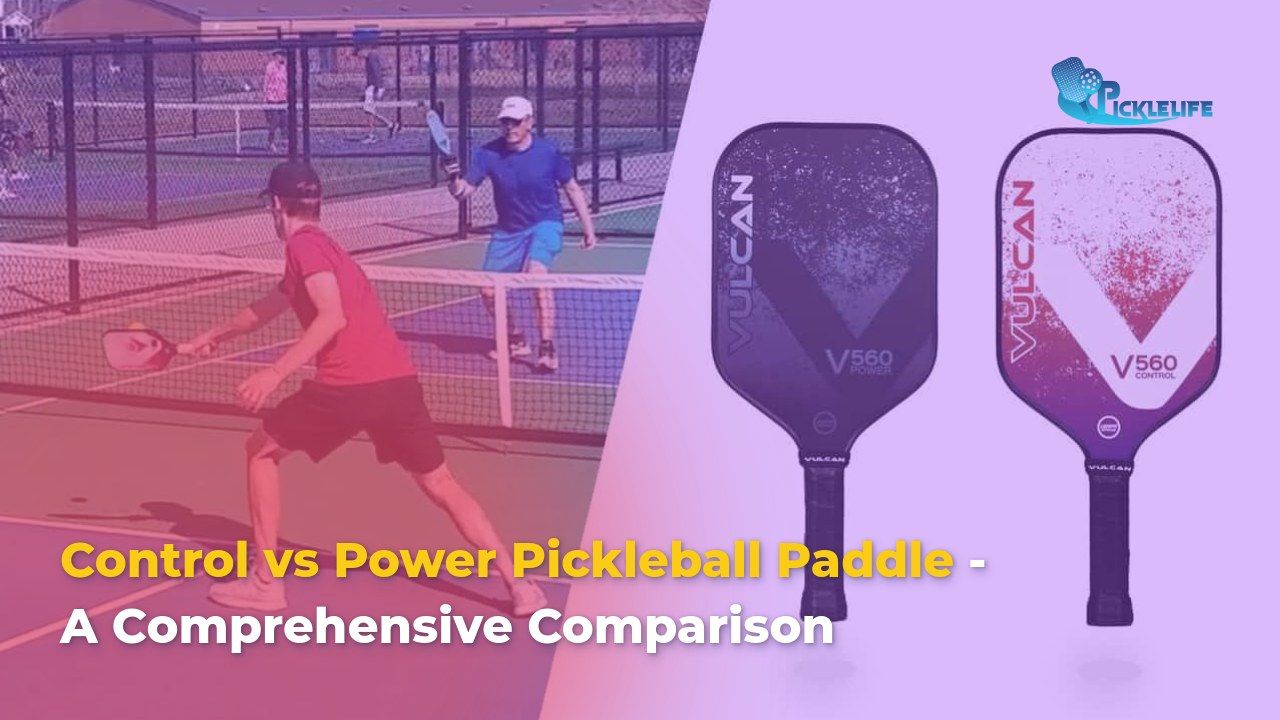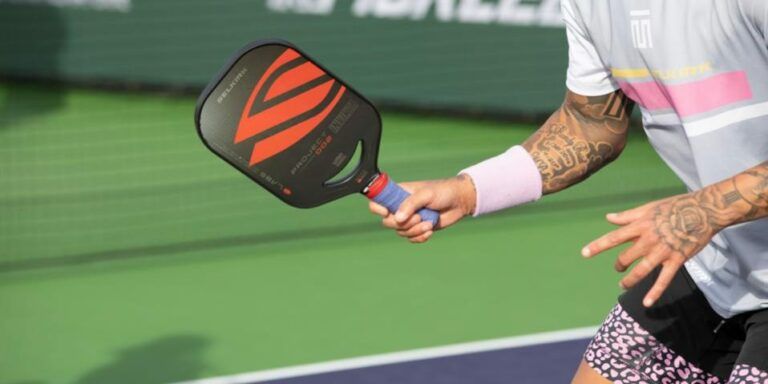Understanding pickleball grip tapes
What is pickleball grip tape?
Pickleball grip tape is a thin, adhesive material designed to be wrapped around the handle of your paddle. It serves as an essential accessory for establishing a secure and comfortable grip on the paddle, thereby improving performance during play. Depending on your needs, you can opt for either a replacement grip that entirely replaces your existing handle or an overgrip that adds an extra layer of tackiness and comfort over the original grip.

Why is good grip tape important?
Good grip tape is imperative for several reasons. Firstly, it provides the necessary traction against sweat, helping to prevent your paddle from slipping during fast-paced rallies. This improved grip translates to enhanced control over your shots and better maneuverability, which are crucial for competitive play. Additionally, a quality grip enhances overall comfort, reducing the risk of blisters and hand fatigue. A worn-out grip can lead to frustrating playing experiences, negatively impacting your confidence and performance. Therefore, investing in a high-quality grip tape can not only improve your gameplay but also make each match more enjoyable.
Overgrip vs. replacement grip tape
Understanding the differences between overgrip and replacement grip tape can significantly affect your gameplay experience:
-
- This is a thin, soft tape wrapped over the existing grip, primarily designed to add tackiness and moisture absorption.
- It's inexpensive, easy to replace, and can add a layer of cushioning, which may diminish vibration on impact.
- However, overgrips typically require more frequent replacements.
-
Replacement grip tape:
- This thicker, more durable tape is applied directly to the paddle handle and is designed to replace the original grip.
- It provides a more secure grip and can alter the feel of the paddle.
- While offering better cushioning, replacement grips can be more challenging to apply and replace compared to overgrips.
Factors to consider when choosing pickleball grip tape
Selecting the right grip tape for your pickleball paddle involves several factors that can significantly influence your comfort and performance on the court.
Grip thickness
One of the first considerations is the grip thickness. The thickness of the grip can dramatically impact your feel for the paddle and your ability to absorb shock during play. Thinner grips tend to offer more feel and control, which can benefit players seeking precision. Conversely, thicker grips provide added cushioning and can help mitigate vibrations, reducing fatigue over long games. Players with smaller hands might prefer thinner grips, while those with larger hands may find thicker grips more comfortable. Ultimately, finding the ideal balance between control and comfort often requires some experimentation.

Material types
The material of grip tapes varies greatly, and the most common options include:
- Polyurethane: Known for being durable and sweat-wicking, often available at a lower price point.
- Rubber: Offers excellent grip and tackiness, especially in humid conditions, though it may wear out faster.
- Leather: Provides a classic feel with good grip but requires more maintenance; typically more expensive.
- Silicone and EVA Foam: Both materials offer a softer feel; EVA foam is particularly beneficial for those with hand sensitivities.
When selecting grip tape, consider factors like durability, sweat absorption based on your playing conditions, tackiness retention, and overall feel.
Tackiness and texture
The tackiness of the grip tape plays a crucial role in how securely you can hold the paddle. High tack grips offer superior control, preventing slippage during play, while excessive tack can make the grip feel sticky for some players. The texture, whether smooth or textured, also influences the grip feel and can affect your overall performance. It’s essential to take your personal preferences and playing conditions into account when choosing between different textures and tackiness levels.
Sweat management (perforation/ventilation)
Some grip tapes come with perforations or ventilation holes, which improve breathability and wick away sweat. This feature is particularly beneficial for players who tend to sweat heavily, as it helps prevent slippery hands, ensuring better control during games. In contrast, non-perforated grips may provide a more consistent surface but can trap moisture, leading to potential slippage.
Cushioning and comfort
Cushioning in grip tapes enhances comfort, which is paramount for prolonged play sessions. Thicker grips generally offer more cushioning, crucial for players with hand or wrist issues, as they provide better shock absorption. However, some players may prefer a firmer feel with less cushioning. Thus, personal preference plays a substantial role in selecting the right grip, and players should test different types to determine what feels best for them.
Durability and longevity
Another factor to explore is the durability of the grip tape. A more durable grip tape can save you money in the long run, as it will last longer under various playing conditions. Factors such as material quality, construction, and customer reviews can help gauge the expected lifespan of specific brands.
Grip size and shape
It’s vital to choose a grip tape that fits your paddle handle snugly. Most grip tapes come in standard sizes, but double-checking dimensions is always wise. Some players may prefer oversized grips for added comfort, while others may prioritize a grip that conforms precisely to their hand shape.
Playing style and personal preference
Your playing style should influence your choice of grip tape. Some players may lean towards thinner grips for better control, while others may opt for thicker ones for comfort and shock absorption. Ultimately, the best grip depends on individual needs and preferences, making this element crucial in your selection process.
Climate conditions
Lastly, consider the climate in which you typically play. If you frequently play in hot and humid conditions, prioritize moisture-wicking grips that can help manage sweat effectively, ensuring a secure grip throughout your matches.
Top pickleball paddle grip tape options
Having explored the factors surrounding the choice of grip tape, let’s look at specific recommendations for both overgrips and replacement grips based on current market offerings.
Gamma “PB Supreme” Overgrip
- Material: Moisture-wicking and soft
- Features: Enhanced tackiness and absorption; various colors available
- Pros: Improves grip and comfort, easy to apply, cost-effective
- Cons: Can become slippery when wet
ProLite Grip
- Best for: Players with sweaty hands
- Material: Moisture-wicking layer, designed for durability
- Features: Cushioned surface for comfort
- Pros: Excellent sweat absorption, affordable
- Cons: Less cushioning compared to others
Head Hydrosorb
- Material: Designed for maximum sweat absorption
- Features: Tacky surface for a secure grip in all conditions
- Pros: Excellent comfort, durable
- Cons: Slightly more expensive than alternatives
Alien Pros X-Dry Overgrip Tape
- Unique Selling Point: Colorful themes to express personality
- Material: Durable and moisture-wicking
- Features: Offers grip and vibration dampening
- Pros: Affordable, available in multi-packs
- Cons: Might be thicker than some players prefer
Tourna Grip
- Material: Dry grips that become tacky as they absorb sweat
- Features: Stable grip during play
- Pros: Comfortable for long matches, easy to replace
- Cons: Some users find it overly tacky initially
Wilson Pro Pickleball Overgrip
- Material: Super-thin, high-stretch felt
- Features: Optimal feel and control
- Pros: Excellent for a lightweight feel
- Cons: Limited cushioning
Gamma PB Hi-Tech Gel Replacement Grip
- Features: Tacky, firm surface with gel cushioning
- Pros: Highly rated for comfort
- Cons: May feel a bit thick for some users
Joola Pickleball Paddle Replacement Grip Tape
- Specialization: Can be cut to size with moisture-wicking properties
- Pros: Customizable for perfect fit
- Cons: Application instructions could be clearer
These selections are based on features, advantages, and user feedback, reflecting the best options available for both overgrips and replacement grips.
Maintaining your pickleball paddle grip tape
To enhance the longevity and performance of your grip tape, it's essential to adopt some maintenance practices.
Regular cleaning
One of the simplest yet most effective ways to prolong the life of your grip tape is through regular cleaning. Wipe down the grip with a damp cloth after each session to remove sweat and dirt. For stubborn stains, use mild soap and water, ensuring it dries thoroughly afterward. Avoid harsh chemicals that could deteriorate the material.
Proper storage
Proper storage of your paddle also impacts the grip tape's durability. Avoid exposing the paddle to direct sunlight or extreme temperatures. Instead, store it in a cool, dry place to prevent damage.
Regular inspection and replacement
Inspect your grip tape regularly for signs of fraying, tears, or excessive wear. It’s crucial to replace the tape promptly to avoid slippage. Pay attention to when the grip's tackiness begins to fade, as this is a clear sign that replacement is necessary.
Applying pickleball grip tape
Proper application of grip tape is vital for ensuring it performs as expected. Here’s a quick guide:
- Clean the existing grip: Start with a clean surface for the best adhesion.
- Peel backing: Carefully peel the backing from the tape and apply it smoothly to avoid wrinkles.
- Trim excess tape: If applicable, trim off the excess tape at the end for a tidy finish.
- Allow to set: Give it a moment to adhere properly before heading back onto the court.
See more: How to replace pickleball paddle grip? Step-by-Step guide
Frequently asked questions (FAQs)
Does thicker grip tape always mean better comfort?
Not necessarily. While thicker grip tape may offer more cushioning, comfort is subjective and depends on personal preference and hand size. Some players may find thinner grips provide better control.
What is the difference between 'tacky' and 'non-tacky' grip tape?
“Tacky” grip tape is designed to be sticky to the touch, providing a secure hold, while “non-tacky” varieties may feel smoother and less sticky, which might suit players who prefer less friction during play.
What are the most common materials used in pickleball grip tape, and what are their benefits?
Common materials include polyurethane for durability, rubber for excellent grip in humid conditions, and leather for a classic feel. Each material has its unique advantages depending on your playing style and comfort needs.
How do different grip thicknesses affect shot control and power?
Thinner grips generally allow for greater control over shot placement, while thicker grips can help cushion impacts, offering added power and stability during strikes.
Conclusion
Choosing the right grip tape for your pickleball paddle is an integral part of enhancing your playing experience. By understanding the materials, features, and specific needs tied to your gameplay, you can make an informed decision. Whether you opt for an overgrip or a replacement tape, it's essential to consider your playing style, climate conditions, and personal preferences in order to find the best grip tape for pickleball paddles that maximizes your comfort and performance on the court. Happy playing!


























